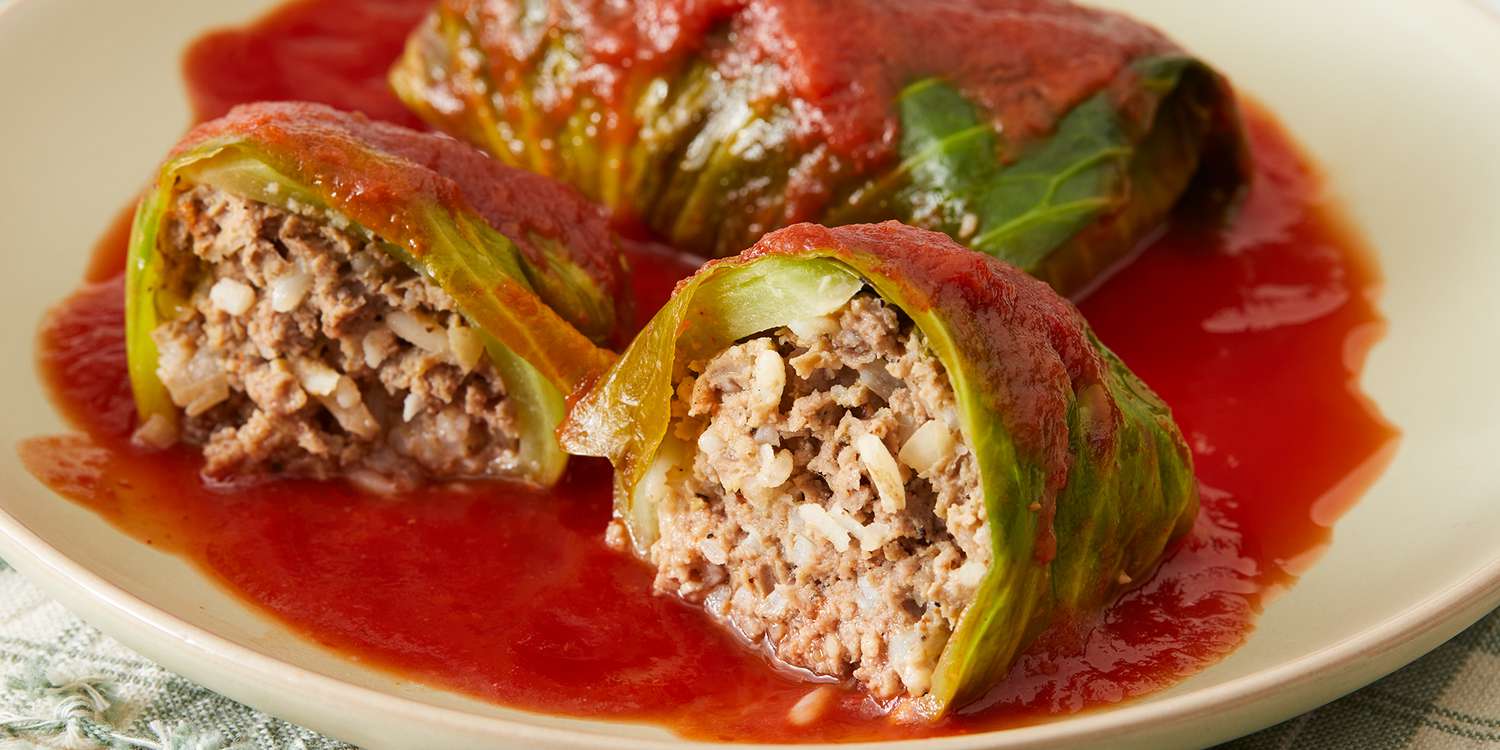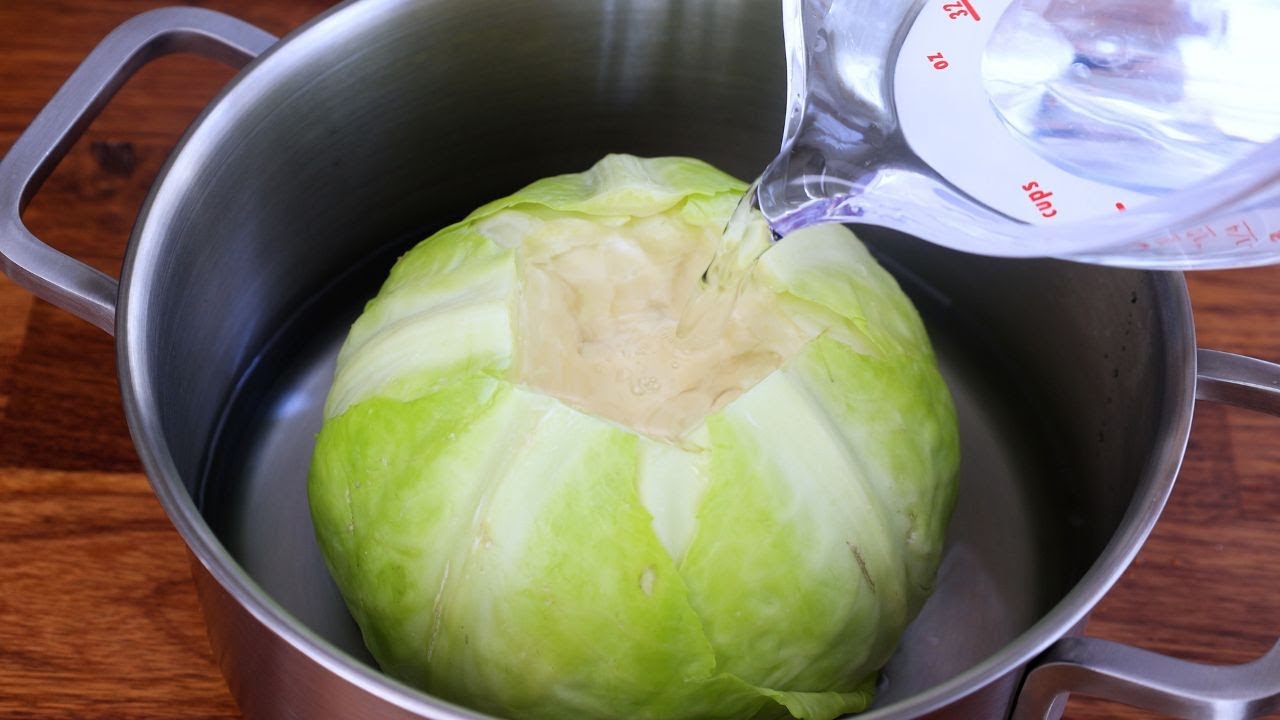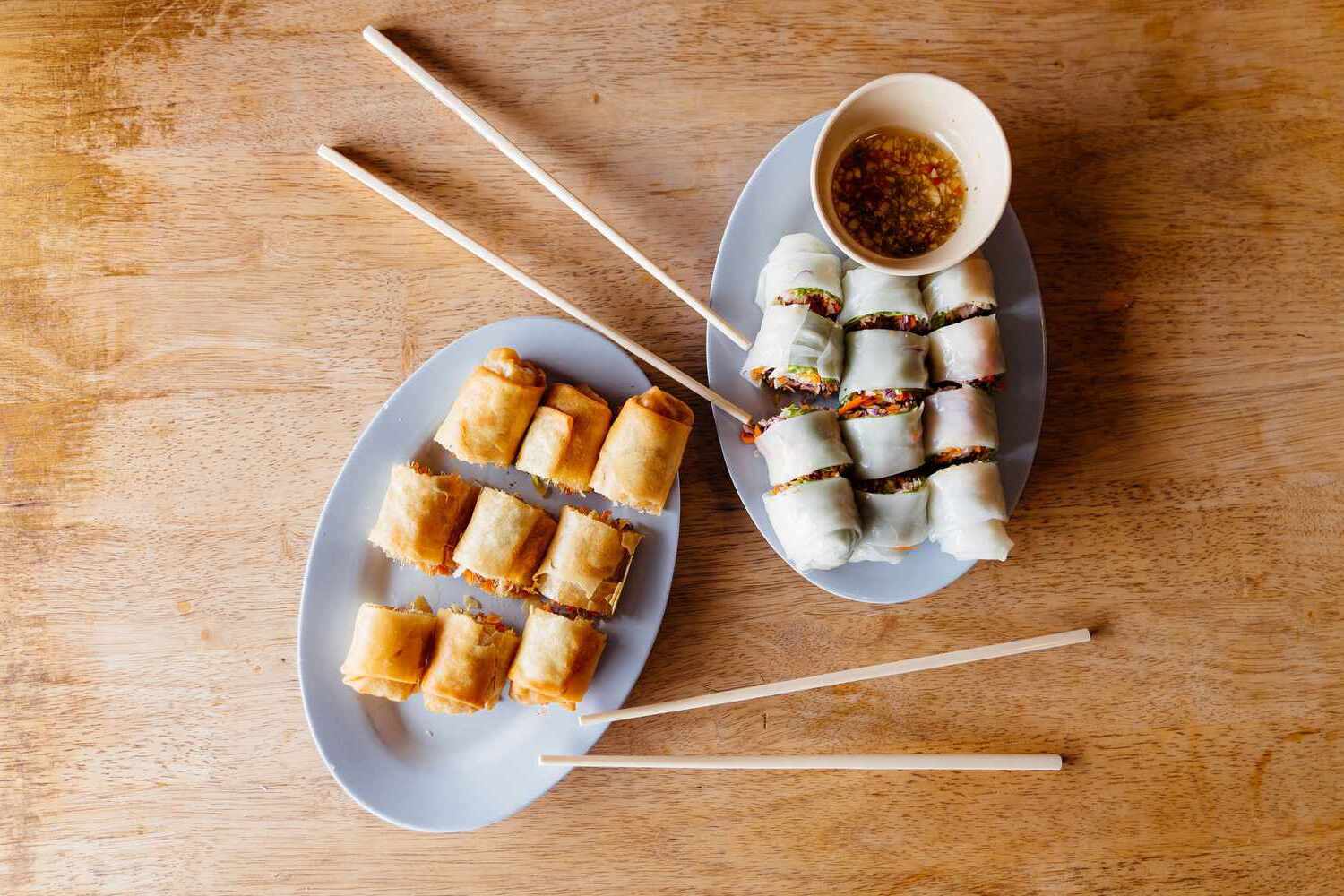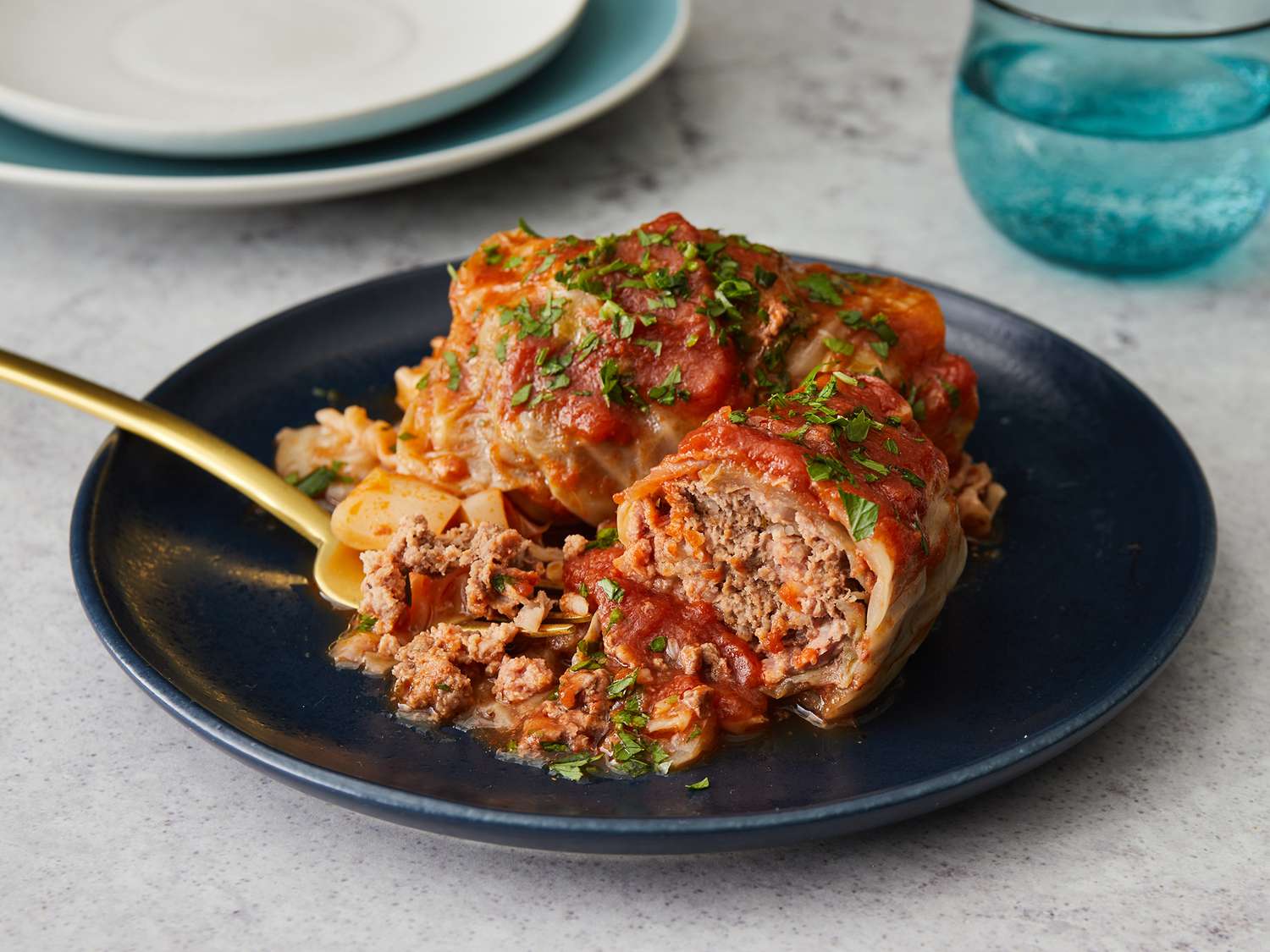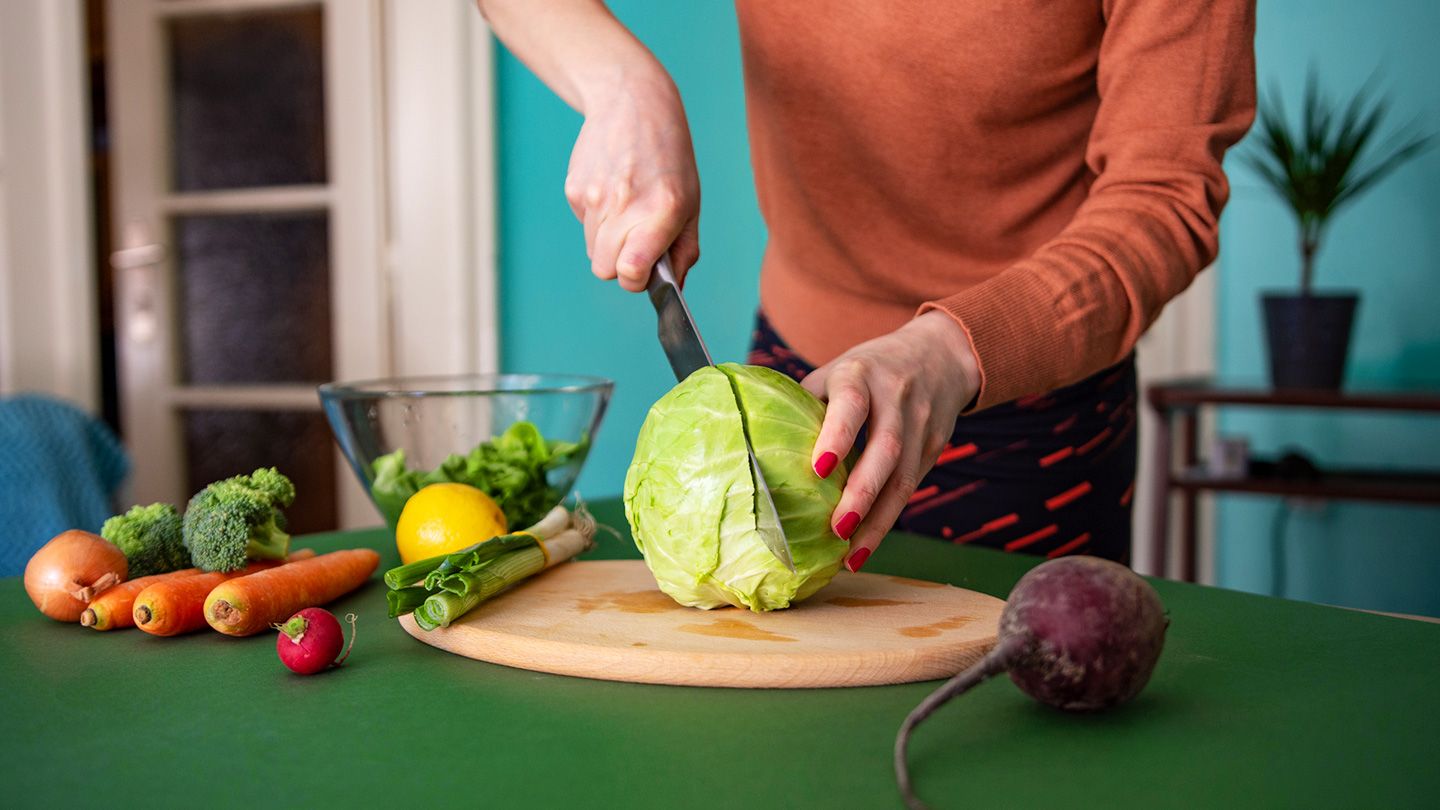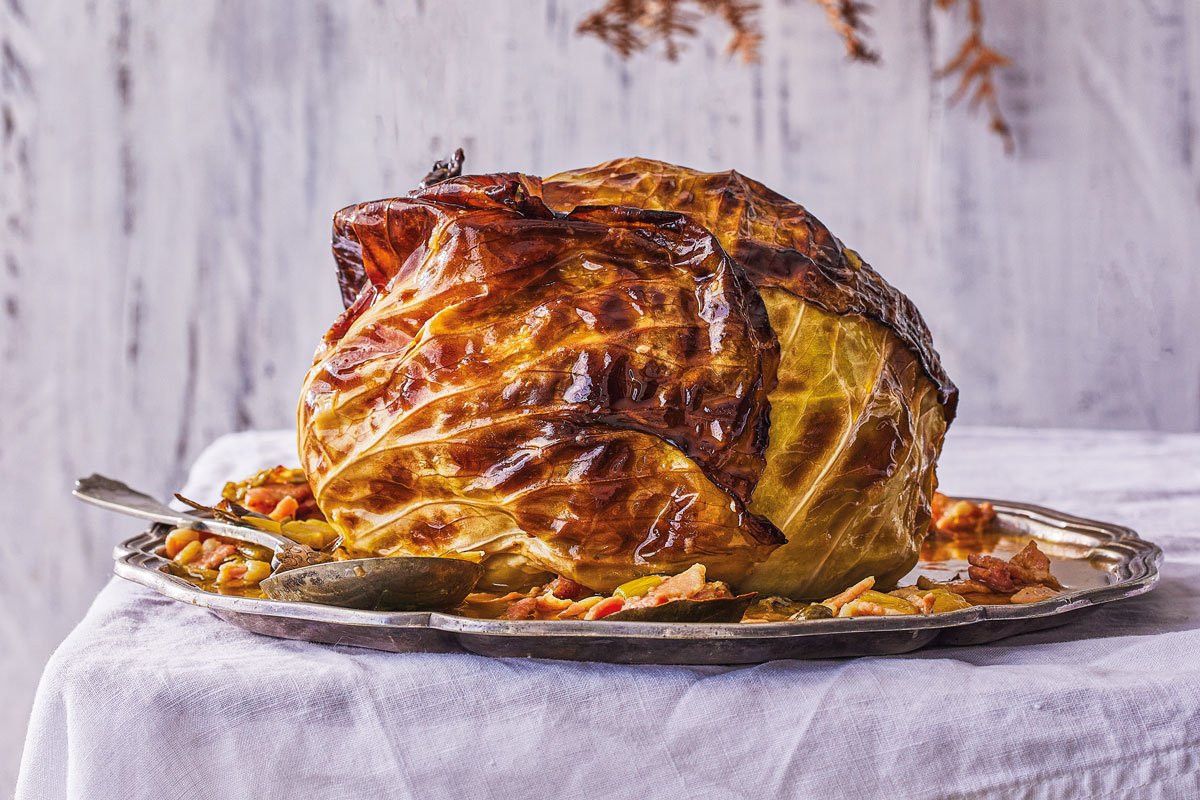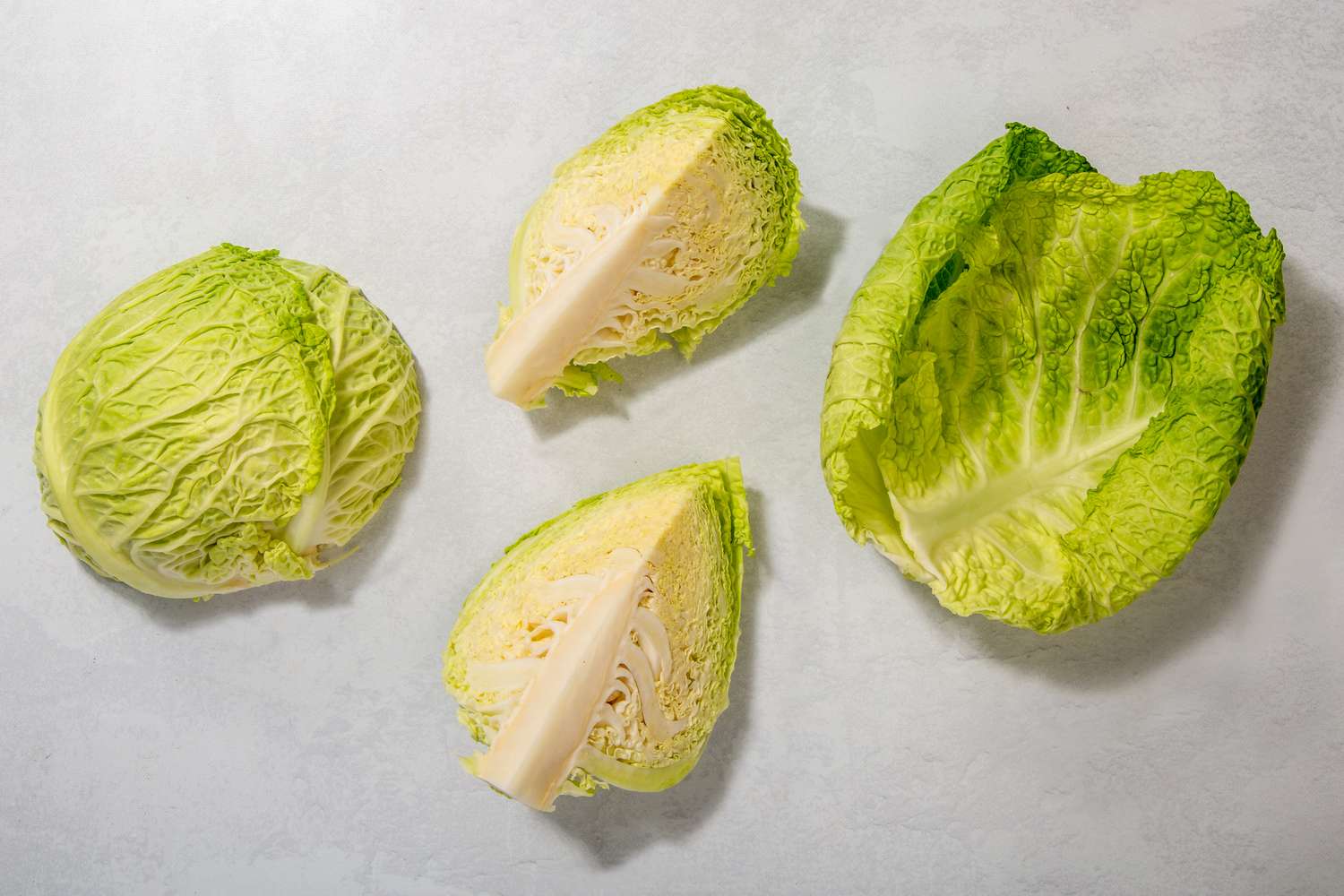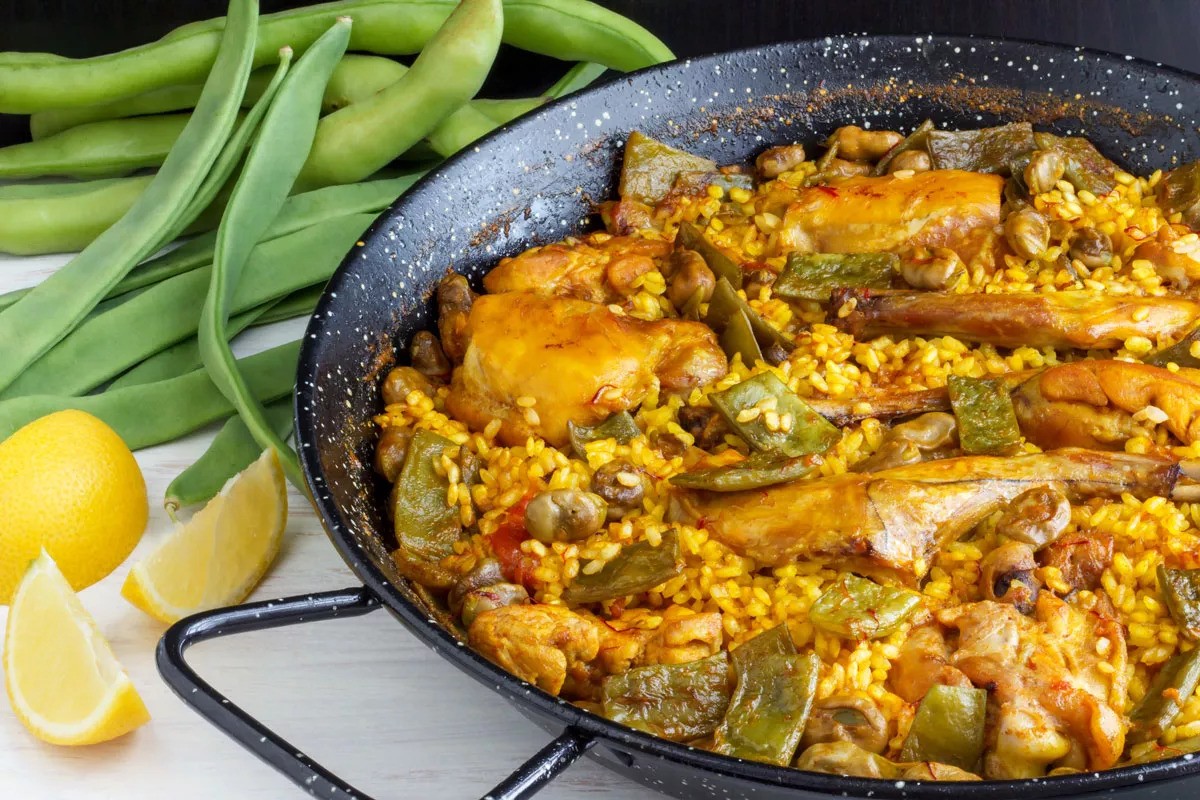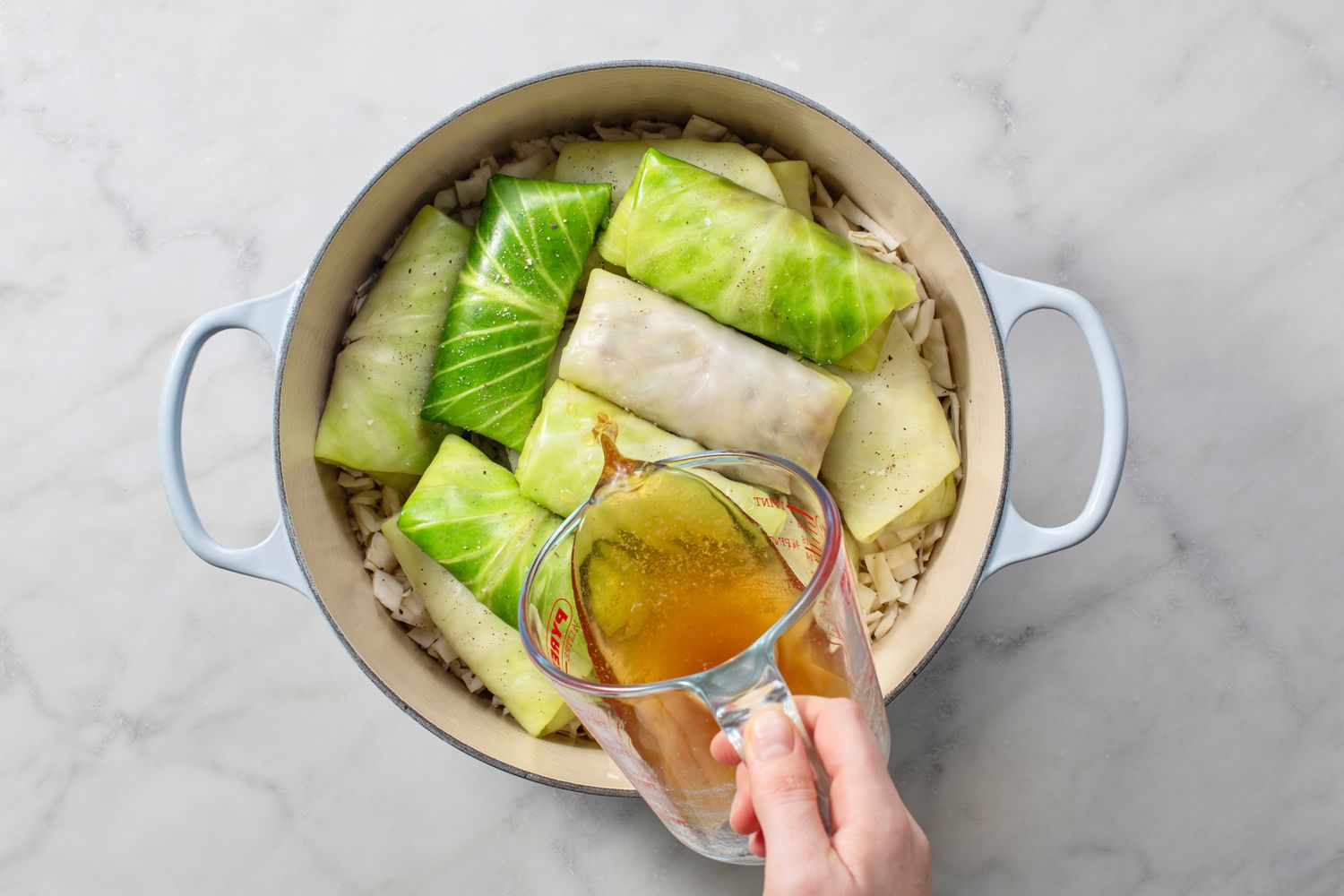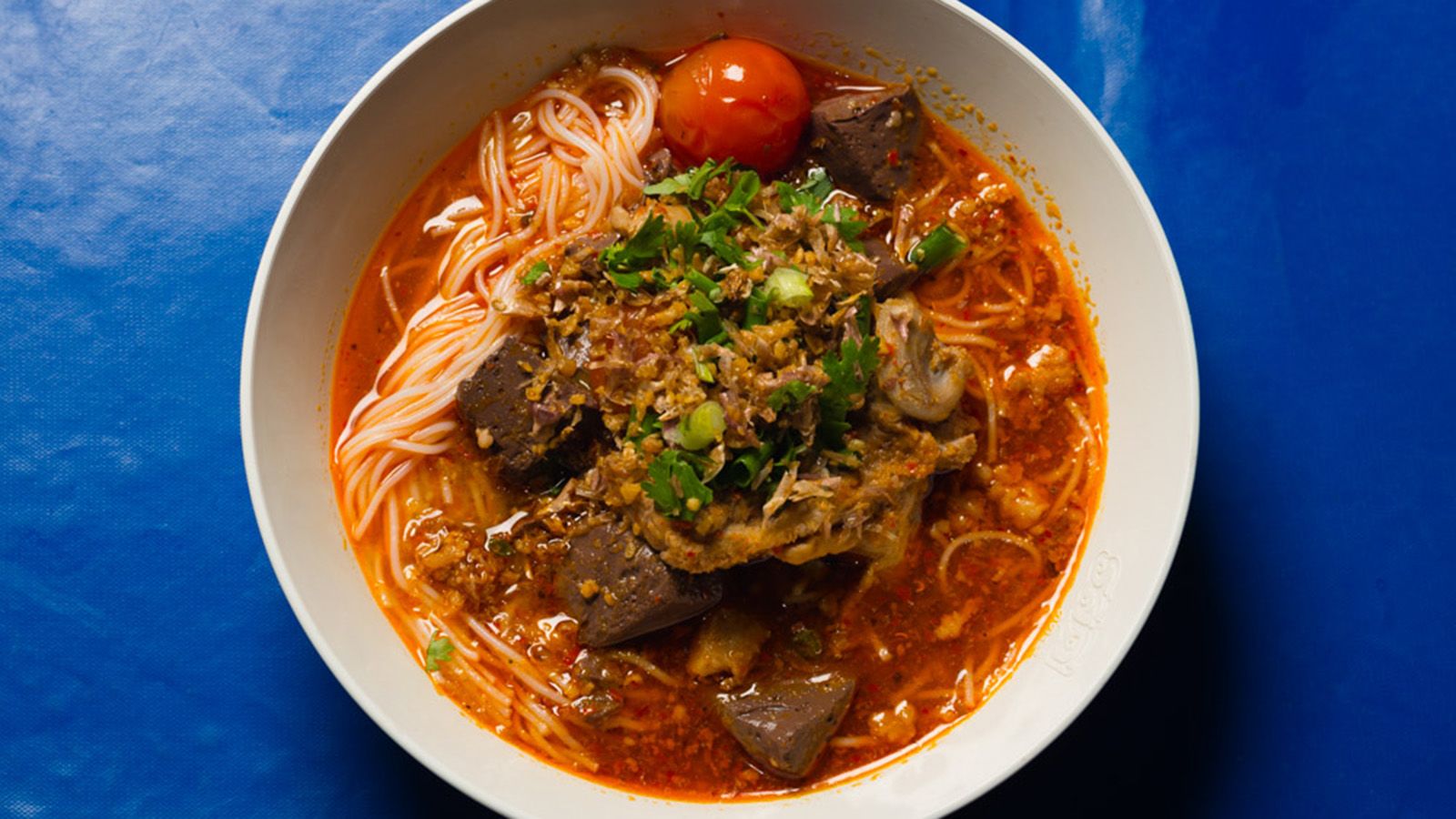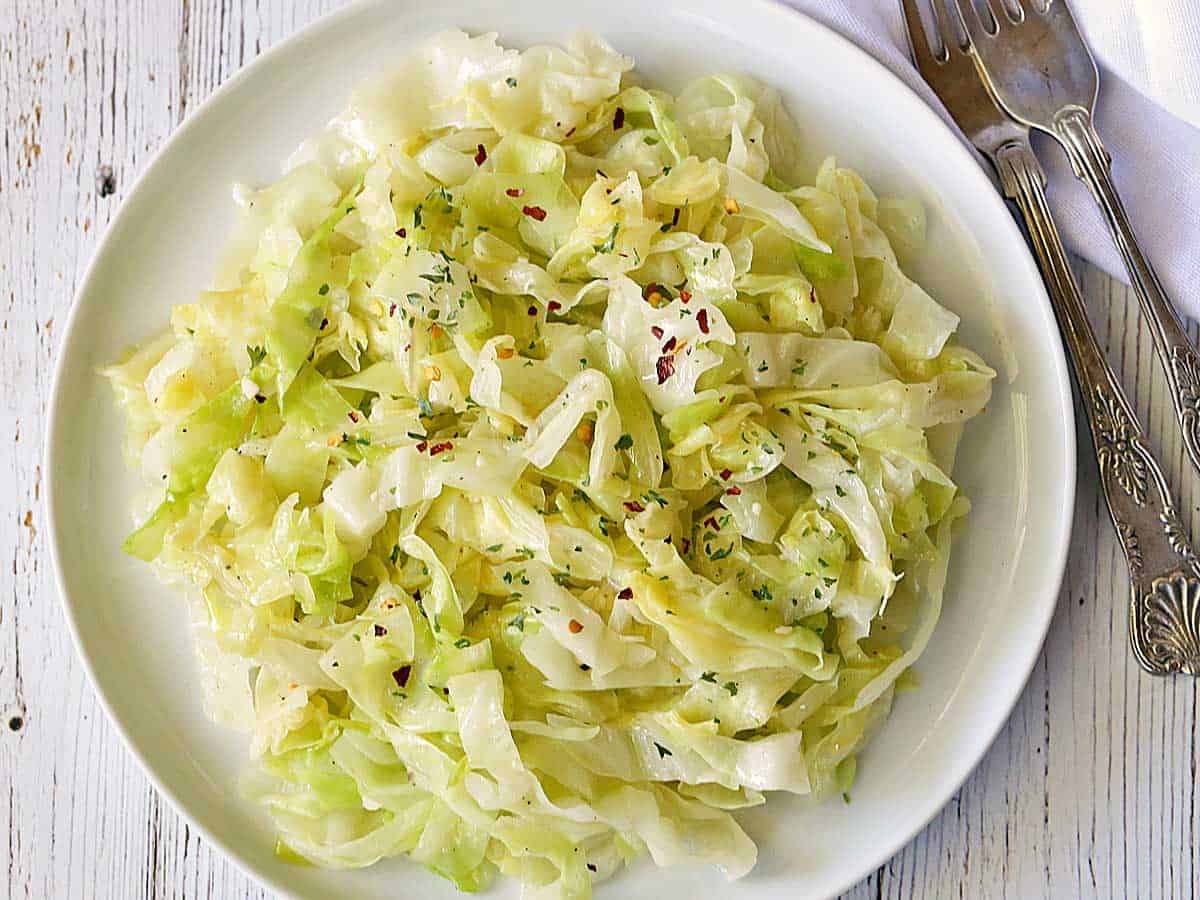Stuffed cabbage rolls, a beloved dish worldwide, showcase diverse flavors and traditions. From Eastern Europe to Asia, each region adds unique twists to this comfort food. In Poland, they’re called "gołąbki" and often feature pork and rice. Hungary’s "töltött káposzta" includes sauerkraut and paprika. In the Middle East, grape leaves sometimes replace cabbage, filled with spiced lamb and rice. Asian versions, like Korean "kimchi jjim," use fermented cabbage for a tangy kick. These variations highlight how one simple concept can evolve into countless delicious forms, reflecting the rich culinary heritage of different cultures.
Gather Your Ingredients for Stuffed Cabbage Rolls
Global Interpretations of Stuffed Cabbage Rolls
Polish Golabki:
- 1 large cabbage
- 1 lb ground pork
- 1 cup cooked rice
- 1 onion, finely chopped
- 2 cloves garlic, minced
- 1 egg
- Salt and pepper to taste
- 1 can tomato sauce
- 1 cup beef broth
Hungarian Töltött Káposzta:
- 1 large cabbage
- 1 lb ground beef
- 1 cup uncooked rice
- 1 onion, finely chopped
- 2 cloves garlic, minced
- 1 egg
- Salt, pepper, and paprika to taste
- 1 can sauerkraut
- 1 can diced tomatoes
- 1 cup chicken broth
Romanian Sarmale:
- 1 large cabbage
- 1 lb ground pork
- 1/2 cup uncooked rice
- 1 onion, finely chopped
- 2 cloves garlic, minced
- 1 egg
- Salt, pepper, and dill to taste
- 1 can tomato paste
- 1 cup water
- 1 smoked ham hock
Middle Eastern Malfouf:
- 1 large cabbage
- 1 lb ground lamb
- 1 cup uncooked rice
- 1 onion, finely chopped
- 2 cloves garlic, minced
- 1 egg
- Salt, pepper, cumin, and allspice to taste
- 1 can tomato sauce
- 1 cup lamb broth
- 1 lemon, juiced
Korean Kimchi Jjim:
- 1 large napa cabbage
- 1 lb ground beef
- 1 cup cooked rice
- 1 onion, finely chopped
- 2 cloves garlic, minced
- 1 egg
- Salt, pepper, and gochugaru to taste
- 1 cup kimchi
- 1 cup beef broth
- 2 tbsp soy sauce
Essential Tools for Making Stuffed Cabbage Rolls
Tools Needed for Global Interpretations of Stuffed Cabbage Rolls
-
Large Pot
- For boiling cabbage leaves until tender.
-
Mixing Bowl
- To combine filling ingredients.
-
Sharp Knife
- For chopping vegetables and trimming cabbage leaves.
-
Cutting Board
- Provides a stable surface for cutting ingredients.
-
Measuring Cups and Spoons
- Ensures accurate measurements of spices and other ingredients.
-
Large Spoon or Ladle
- Helps in scooping and mixing the filling.
-
Baking Dish or Casserole
- Holds the stuffed cabbage rolls while baking.
-
Aluminum Foil or Lid
- Covers the baking dish to keep moisture in.
-
Tongs
- Useful for handling hot cabbage leaves.
-
Skillet or Frying Pan
- For browning meat or sautéing vegetables.
-
Oven Mitts
- Protects hands when handling hot dishes.
-
Serving Platter
- Presents the finished rolls attractively.
-
Food Processor (Optional)
- Speeds up chopping and mixing tasks.
-
Slotted Spoon
- Drains excess liquid from boiled cabbage leaves.
-
Timer
- Keeps track of cooking times.
Stuffed cabbage rolls vary globally: Eastern Europe uses rice and meat, Asia prefers pork with mushrooms, and the Middle East opts for lamb with spices. Each region adds unique flavors.
Why This Recipe is a Must-Try
Stuffed cabbage rolls are a culinary tradition found in many cultures. They symbolize comfort and family gatherings. Each region adds its unique twist, reflecting local ingredients and flavors. From Eastern Europe's sour cabbage to Asia's spicy fillings, these rolls showcase the diversity and creativity of global cuisine.
Preparing stuffed cabbage rolls connects us to our heritage. The process of rolling and stuffing cabbage leaves fosters togetherness. Sharing these dishes at the table strengthens bonds and celebrates cultural roots. This tradition keeps stories alive, passing them down through generations.
Step-by-Step Guide to Perfect Stuffed Cabbage Rolls
Global Interpretations of Stuffed Cabbage Rolls
-
Selecting Cabbage: Opt for green cabbage due to its large, pliable leaves. In some regions, savoy cabbage is preferred for its texture.
-
Preparing Leaves: Blanch cabbage leaves in boiling water until soft. This makes them easier to fold without tearing.
-
Rice Preparation: Cook rice until it's partially done. It will cook further inside the rolls, absorbing flavors.
-
Meat Choices: Ground beef, pork, or a mix are common. For a vegetarian twist, use lentils or mushrooms.
-
Flavor Profiles:
- Eastern Europe: Combine meat with rice, onions, garlic, and paprika.
- Middle East: Add cinnamon, nutmeg, and pine nuts to the mix.
- Asia: Incorporate ginger, soy sauce, and scallions.
-
Filling the Leaves: Place a spoonful of filling on each leaf. Fold in sides and roll tightly to encase the filling.
-
Arranging Rolls: Place rolls seam side down in a baking dish or pot. This prevents them from unraveling during cooking.
-
Sauce Variations:
- Tomato-based: Popular in many countries, seasoned with herbs.
- Lemon and egg: A lighter, tangy sauce favored in Middle Eastern recipes.
- Creamy tomato: Adds richness, often found in European versions.
-
Cooking Methods:
- Baking: Cover rolls with sauce and bake. This method is widely used for its ease and flavor infusion.
- Stovetop: Simmer rolls in sauce on low heat. Ideal for achieving a tender texture.
-
Serving Suggestions: Complement with sour cream or yogurt in Eastern European dishes. Mint or parsley enhances Middle Eastern versions. Serve with extra sauce on the side for added moisture and flavor.
Cultural Adaptations:
- Poland: Known as Golabki, served with a rich tomato sauce.
- Lebanon: Called Mehshi Malfouf, often includes a lemony sauce.
- Sweden: Kåldolmar are sweetened with lingonberry jam.
- Japan: Rolled cabbage in a clear broth, highlighting umami flavors.
Tips for Success:
- Ensure cabbage leaves are sufficiently blanched to be flexible but not too soft.
- Don't overfill leaves to prevent bursting during cooking.
- Adjust seasoning based on the sauce to maintain a balanced flavor profile.
By embracing these steps and tips, one can explore the rich tapestry of stuffed cabbage rolls from around the globe, each offering a unique glimpse into the culinary traditions that shape our world.
Bringing It All Together
Stuffed cabbage rolls are a culinary delight enjoyed worldwide. From Eastern Europe’s sour cabbage and pork versions to Asia’s spicy and vegetarian takes, these rolls showcase the diversity of global cuisine. Each region adds its unique twist, making stuffed cabbage a versatile dish that can be adapted to various tastes and dietary needs. Whether you prefer them baked, steamed, or slow-cooked, there’s a recipe out there for everyone. So next time you’re in the mood for something hearty and flavorful, give stuffed cabbage rolls a try. You might just find a new favorite dish that brings a bit of the world to your table. Happy cooking!
Common Questions About Stuffed Cabbage Rolls
What are stuffed cabbage rolls?
Stuffed cabbage rolls are a dish where cabbage leaves are filled with a mixture of ingredients like meat, rice, vegetables, and spices. They are then rolled up and usually cooked in a sauce.
What ingredients do I need to make stuffed cabbage rolls?
You'll need cabbage leaves, ground meat (like beef, pork, or turkey), rice, onions, garlic, tomato sauce, and spices like salt, pepper, and paprika. Some recipes also include herbs like dill or parsley.
How do I prepare the cabbage leaves?
To prepare the cabbage leaves, you need to boil the whole cabbage for a few minutes until the leaves are soft enough to roll. Then, carefully peel off each leaf and let them cool.
Can I make vegetarian stuffed cabbage rolls?
Absolutely! For vegetarian stuffed cabbage rolls, you can use a filling made of rice, lentils, mushrooms, onions, and spices. You can also add chopped vegetables like carrots or zucchini.
What are some global variations of stuffed cabbage rolls?
Different countries have their own versions. In Poland, they're called Gołąbki and often include pork and rice. In Turkey, Lahana Sarması features lamb and bulgur. Japan has Roll Cabbage, usually filled with ground beef and pork.
How long do I cook stuffed cabbage rolls?
Cooking time can vary, but generally, stuffed cabbage rolls are baked or simmered for about 1 to 1.5 hours. This allows the flavors to meld and the cabbage to become tender.
Can I freeze stuffed cabbage rolls?
Yes, you can freeze them! After assembling the rolls, place them on a baking sheet to freeze individually. Once frozen, transfer them to a freezer bag. They can be cooked directly from frozen, just add extra cooking time.
